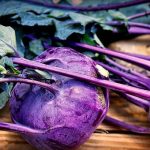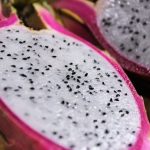Organics used to be a niche product available in health food stores but now they are much more widely available at the local supermarket. This has caused some difficulty in the fruit and vegetable section. You could opt for an apple that has been farmed using traditional techniques. Or you can pick one that’s organic. Both apples are firm, shiny and red. They both provide vitamins and fiber. And neither apple has fat, salt or cholesterol. Which should you choose? Get the facts before you shop.
Americans are becoming more and more inclined to search for “pure” foods that do not contain any artificial coloring, flavoring, or preservatives.
Consumers seeking out food products with fewer toxins and no use of antibiotics must be aware of ones that are certified organic. Nevertheless, few are aware that the US government enforces very strict limits on the incorporation of synthetic elements in packaged organic food items, such as cereals, snacks, and dressings.
Organic food never includes any type of chemical preservatives, coloring agents, or flavoring agents. No more than forty synthetic components can be applied to organic pre-packaged foods, and this is only possible once they have gone through review by experts from independent and governmental bodies.
In comparison, numerous chemicals can be included in typical prepackaged foods, like preservatives, tastes, and colors which are associated with health issues.
Many shoppers do not realize that in the majority of cases, food industries do not require authorization from the government for the vast majority of chemicals used in the production of pre-packaged food. The same corporations that construct these compounds are given the authority to assert that they are “secure,” and there is no requirement for the chemicals that are added to traditional packaged items to be reviewed from time to time according to modern scientific knowledge.
Federal regulators and independent specialists must examine artificial ingredients before allowing them to be used in organic canned goods. Organic packaged foods can only contain these ingredients when there is no other naturally or organically sourced alternative.
Organic packaged items make up only 3% of the American prepackaged food retail market, signifying that these products can be manufactured and sold on a large scale without the application of large amounts of inadequately controlled chemicals.
Consumers are increasingly searching for “natural” items, however, organic companies are the only ones supported by obligatory regulations.
Organic Farming
Organic farming is a term used to describe how farmers cultivate and process their agricultural products. This selection includes fruits, veggies, grains, dairy items like milk and cheese, and meat. Organic farming practices are designed to meet the following goals:
- Improve soil and water quality
- Cut pollution
- Provide safe, healthy places for farm animals (livestock) to live
- Enable natural farm animals’ behavior
- Promote a self-sustaining cycle of resources on a farm
Materials or methods not allowed in organic farming include:
- Artificial (synthetic) fertilizers to add nutrients to the soil
- Sewage sludge as fertilizer
- Most synthetic pesticides for pest control
- Using radiation (irradiation) to preserve food or to get rid of disease or pests
- Using genetic technology to change the genetic makeup (genetic engineering) of crops, which can improve disease or pest resistance, or to improve crop harvests
- Antibiotics or growth hormones for farm animals (livestock)
Organic crop farming materials or practices may include:
- Plant waste left on fields (green manure), farm animals’ manure or compost to improve soil quality
- Plant rotation to keep soil quality and to stop cycles of pests or disease
- Cover crops that prevent wearing away of soil (erosion) when sections of land aren’t in use and to plow into soil for improving soil quality
- Mulch to control weeds
- Insects or insect traps to control pests
- Certain natural pesticides and a few synthetic pesticides approved for organic farming, used rarely and only as a last choice and coordinated with a USDA organic certifying agent
Organic farming practices for farm animals (livestock) include:
- Healthy living conditions and access to the outdoors
- Pasture feeding for at least 30% of farm animals’ nutritional needs during grazing season
- Organic food for animals
- Shots to protect against disease (vaccinations)
The USDA has established an organic certification program with strict government standards which all organic food must fulfill. Rules dictate how food is cultivated, dealt with, and prepared.
Products that have organic on their instructions or packaging must be authorized by the US Department of Agriculture. If the product has been certified, the creator may show off a stamp from the United States Department of Agriculture (USDA) declaring it as an organic item.
Organic food producers have to abide by the rules set out for organic production. They do not require undergoing the accreditation procedure. They can label their products as organic. But they can’t use the official USDA Organic seal.
Products that are officially recognized as having 95% or more organic ingredients are able to sport the United States Department of Agriculture seal. The USDA guidelines describe organic foods on product labels as:
- 100% organic. This label is used on certified organic fruits, vegetables, eggs, meat or other foods that have one ingredient. It may also be used on food items with many ingredients if all the items are certified organic, except for salt and water. These may have a USDA seal.
- Organic. If a food with many ingredients is labeled organic, at least 95% of the ingredients are certified organic, except for salt and water. The items that aren’t organic must be from a USDA list of approved additional ingredients. These also may have a USDA seal.
- Made with organic. If a product with many ingredients has at least 70% certified organic ingredients, it may have a “made with organic” ingredients label. For example, a breakfast cereal might be labeled “made with organic oats.” The ingredient list must show what items are organic. These products can’t carry a USDA seal.
- Organic ingredients. If a product has some organic ingredients but less than 70% of the ingredients are certified organic , the product can’t be labeled as organic. It also can’t carry a USDA seal. The ingredient list can show which ingredients are organic.
How Organic Food is Produced
Organic packaged foods generally have a limited selection of synthetic additives, with no more than 40. Synthetic additives that can be used in organic packaged food must be officially included in the National List, a record of substances which have been looked at by independent and government authorities.
Since 2008, no less than 72 synthetic components have been taken out, rejected, or tightly limited in organic food, whereas only six synthetic components have been given the green light. In order to include or take out an ingredient from the National Collection, an application has to be handed over to the National Organic Standards Board and the USDA for assessment. After a request for action is logged, the National Organic Standards Board will assemble a division to see if any additional details are required. This division could possibly ask a specialist from a separate entity to give a comprehensive statement. The standards board must evaluate the petition taking into account factors such as the poisonous nature of the substance and the likely repercussions to health and the environment.
Synthetic substances intended for use in organic packaged foods must not have any negative effects on the environment or result in a decrease of the nutritional value of the food. Applicants must also show that the material cannot be acquired from a natural origin and confirm that it is not being utilized for preservation, taste, shade, or structure. Synthetic components which can be utilized in organic food include things that act as a leavening agent, such as ammonium carbonate and potassium carbonate; materials that can thicken a food item, like sodium phosphate or xanthan gum; and substances which are used to scrub food-related apparatus. Numerous of these synthetic compounds are additionally restricted by definite fabrication guidelines or utilization in certain nourishments.
The USDA will make a decision on whether to include the recommended substance on the list of synthetic elements for usage in organic packaged goods after the National Organic Standards Board has provided their opinion.
The National List standards board has to look over each chemical every five years to make sure that it still follows all the criteria that is needed. In this assessment, the board takes into account any fresh data, including possible outcomes for people and the environment, plus any fresh, natural alternatives.
As opposed to this, not a single additional element added to regular commercialized foods – such as grandfathered chemicals, those that the FDA has formally reviewed, or compounds that the food and chemical corporations claim to be safe – are checked periodically to keep track of any scientific advancements.
No demand exists for the researchers in the food industry that are assessing additives to regular foods to not have conflicting interests.
Ingredients You Won’t Find In Organic Food
1. Chemical Preservatives
Adding chemical preservatives to conventional packaged foods may increase the chances of being exposed to various illnesses, including cancer and endocrine disturbances.
For instance, BHA, a usually added preservative to food items such as pizza, sausages, and pepperoni in their frozen state, may up the probability of cancer. The state of California has declared BHA to be carcinogenic, and the European Union has classified it as a possible endocrine disruptor.
Butylated hydroxytoluene (BHT) is a preservative derived either from coal tar or petroleum. This chemical has been found in numerous cereals and has been shown to create lung and liver tumors in studies of laboratory animals.
2. Chemical Flavors
Organic food in packaging cannot include any synthetic produced flavorings. Certain flavors found in typical foods can be composed of over one hundred chemicals that do not require an indication on the product’s packaging.
The taste can comprise any of the 2,700 compounds not monitored directly by the Food and Drug Administration, yet rather authorized for application by an association of industry professionals called the Flavor and Extract Manufacturers Association. In comparison, flavors that are taken from natural and non-artificial elements can be present in organic pre-packaged meals. As of December 2019, natural flavors cannot be included if organic flavors are obtainable in the market.
Organic food must come from natural sources, and all of its flavors must be made without employing synthetic chemicals or incorporating any artificial preservatives.
3. Synthetic Colors
Synthetic colors are also prohibited in organic packaged foods. Unlike additives such as preservatives and flavors, the FDA must examine all food colors to ensure they are safe to consume. Nevertheless, some colors have raised health concerns.
Caramel colors III and IV have shown evidence of being polluted with 4-methylimidazole, a chemical that has links to cancer. Although organic caramel color may be found in organically labeled food products, the USDA’s organic regulations stipulate that it needs to be produced without 4-methylimidazole contamination.
Professionals are also worried about the effects that artificial colors have on kids. A 2010 report made to the Food and Drug Administration’s Food Advisory Committee, a report that was based on 35 years’ worth of scientific studies, suggested that some food additives can heighten hyperactive behaviors in some groups of children (such as inattention, impulsivity, and overactivity). Especially vulnerable children in this group are those suffering from Attention Deficit Hyperactivity Disorder, with sensitivities to artificial food coloring.
Organic Food Has Minimal Environmental Impacts
Organic regulations disallow the use of any components in organic food if they are responsible for negative impacts on the environment when they are produced, employed, or thrown away.
An example of this would be that the usage of calcium acid pyrophosphate, which is used in baked goods, was not allowed in organic food products due to worries that it might contain heavy metals from mining and have a negative environmental impact from the production of phosphoric acid.
Potential Benefits of Organic Food
Research indicates that organic foods could be potentially beneficial for health when compared to food grown through conventional techniques. These studies have shown differences in the food. Little evidence is available to show how these distinctions could potentially provide complete health advantages.
Potential benefits include the following:
- Nutrients. Studies have shown small to moderate increases in some nutrients in organic produce. Organic produce may have more of certain antioxidants and types of flavonoids, which have antioxidant properties.
- Omega-3 fatty acids. The feeding requirements for organic farm animals (livestock) usually cause higher levels of omega-3 fatty acids. These include feeding cattle grass and alfalfa. Omega-3 fatty acids — a kind of fat — are more heart healthy than other fats. These higher omega-3 fatty acids are found in organic meats, dairy and eggs.
- Toxic metal. Cadmium is a toxic chemical naturally found in soils and absorbed by plants. Studies have shown much lower cadmium levels in organic grains, but not fruits and vegetables, when compared with crops grown using usual (conventional) methods. The lower cadmium levels in organic grains may be related to the ban on synthetic fertilizers in organic farming.
- Pesticide residue. Compared with produce grown using usual (conventional) methods, organically grown produce has lower levels of pesticide residue. The safety rules for the highest levels of residue allowed on conventional produce have changed. In many cases, the levels have been lowered. Organic produce may have residue because of pesticides approved for organic farming or because of airborne pesticides from conventional farms.
- Bacteria. Meats produced using usual (conventional) methods may have higher amounts of dangerous types of bacteria that may not be able to be treated with antibiotics. The overall risk of contamination of organic foods with bacteria is the same as conventional foods.
Sources:
https://www.ams.usda.gov/sites/default/files/media/GuideForOrganicCropProducers.pdf
https://www.ewg.org/research/packagedorganic
https://www.sciencedirect.com/topics/immunology-and-microbiology/butylated-hydroxytoluene
https://www.statista.com/statistics/244393/share-of-organic-sales-in-the-united-states/#:~:text=In%202022%2C%20organic%20food%20sales,sales%20between%202008%20and%202022.









